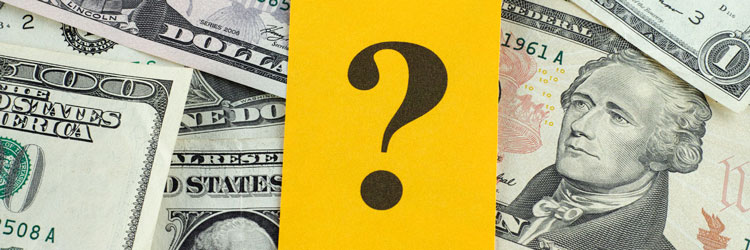As a business owner we struggle with setting prices.
If we set it too high – will customers walk away? If we set it too low – will we leave money on the table? The two most common ways I see it done is to; base your price on what everyone else is charging or charge based on your cost. However as a customer we really don’t care what your cost is – we pay for something based on the value that we believe we are receiving.
Even though accountants help guide businesses through the financial processes, we have an unusual habit in how we bill. Many firms bill the client based on the number of hours it took to complete or incurred. At this time the client either pays the bills or confronts the person who billed it. Thus we “agree” upon a price with the Client after the service is provided. In most situations the buyer decides on a more definite price before purchasing.
In setting prices, there is a hierarchy of how much leniency you have in setting your price based on what you are selling. So the first step is determining what you are charging for?
- If you charge for stuff, then you are in the commodity business
- If you charge for tangible things, then you are in the goods business
- If you charge for the activities you execute, then you are in the service business
- If you charge for the time customers spend with you, then you are in the experience business
If you charge for the demonstrated outcome the customer achieves, then you are in the transformation business- effectual and lasting.
If you are charging for commodities, goods or services – there is little difference as to who provides it. Thus pricing is very competitive and the lowest price usually wins. If the customer is paying for the time they spend with you or your product, such as a rental or employees then the value is set by the hourly, weekly or monthly rate. Majority of these items have a limited value. They are very competitive and don’t provide the “priceless” element. However, if you are charging for the customer transformation, the price can become unique or “priceless”. This depends on the perceived value of the transformation to the buyer.
Remember people buy emotionally and justify intellectually. Emotions such as pain and pleasure move people to buy, whereas reason leads to conclusion that it is in their best interest to buy, but it doesn’t necessarily move them to action.
A product or service needed is worth more when it is desired or needed than when it is delivered. Think about buying a bottle of water when you are thirsty. Will you pay more for it before you receive it or after? Chances are you will pay even more if you are walking in a very hot desert for hours. You want to agree upon a price at the time the product or service is of the highest value to the customer, when they want it not when they receive it.
As you can tell – Setting prices is an art not a science.
If you would like to refine your pricing and determine the financial impact on your business, we can help rework your masterpiece. For more information contact Mary@focus-cpa.com.
By Mary Guldan-Lindstrom, CPA

